NCERT Solutions Class 8 Maths Chapter 3 Exercise 3.2 Understanding Quadrilaterals
NCERT solutions for class 8 maths chapter 3 exercise 3.2 understanding quadrilaterals is purely based on the exterior angle property which states that the sum of all the exterior angles of a polygon will be 360 degrees. NCERT solutions class 8 maths chapter 3 exercise 3.1 has 6 simple sums. All of them are based on the angle sum property but are framed in a different way. For example, some problems will directly ask a student to apply the formula while others might ask for the number of sides given the measure of an exterior angle.
In order to successfully attempt all the problems in this exercise students must have good calculation accuracy. They must also be able to read the question and understand the application of the angle sum theorem. Class 8 maths NCERT solutions chapter 3 exercise 3.2 understanding quadrilaterals is an amazing reference source and can be accessed via the link given below.
☛ Download NCERT Solutions Class 8 Maths Chapter 3 Exercise 3.2
Exercise 3.2 Class 8 Chapter 3
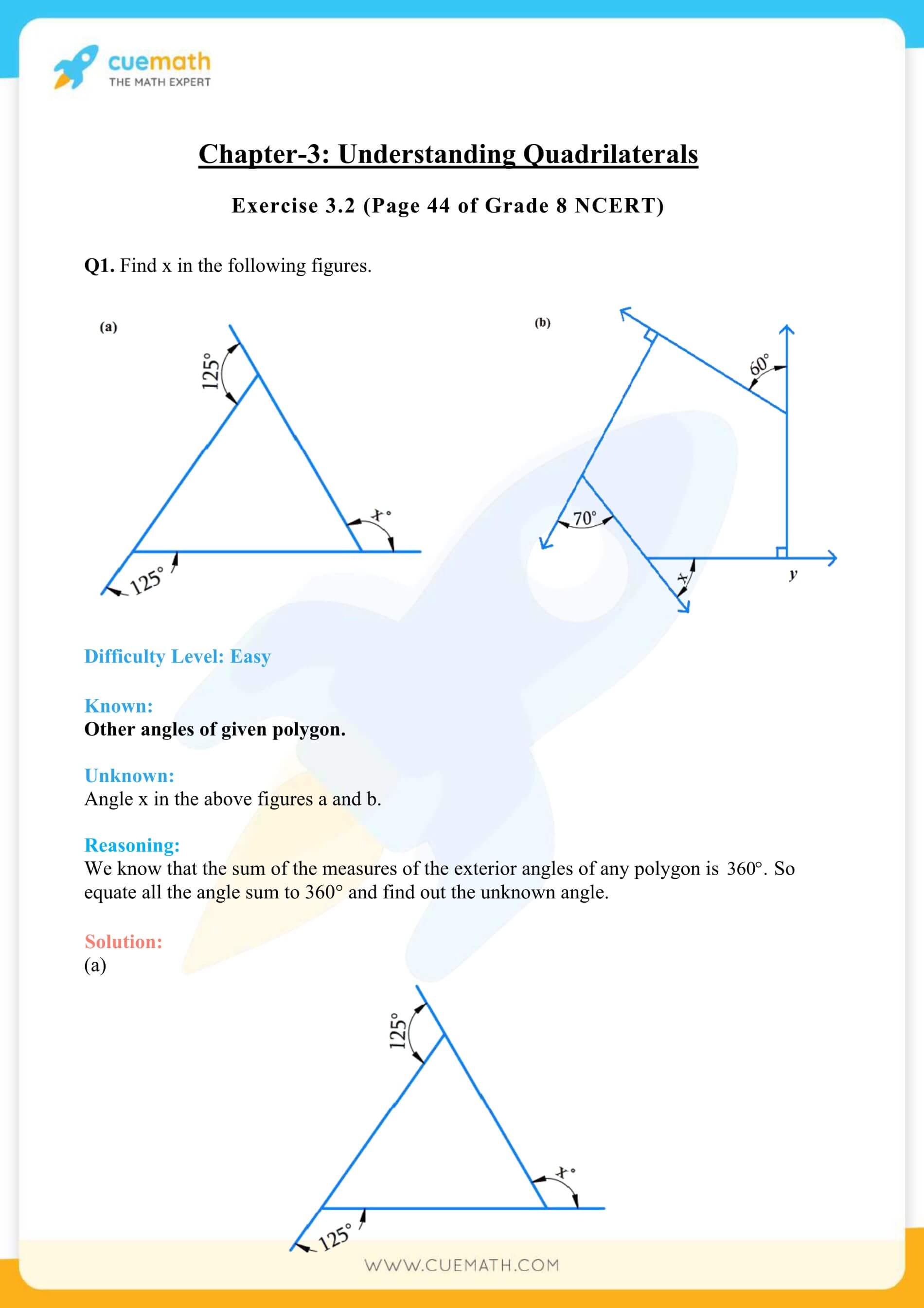
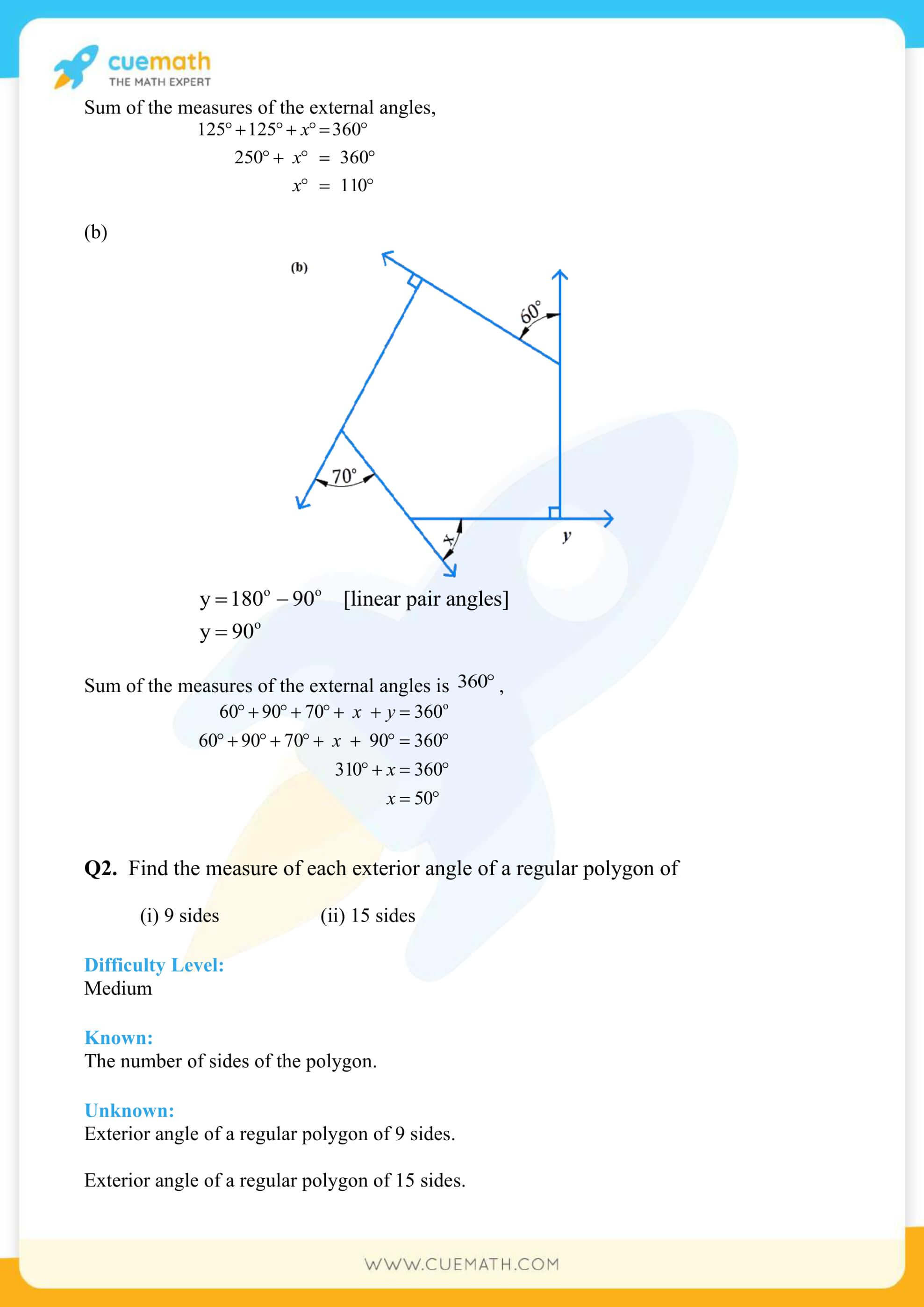
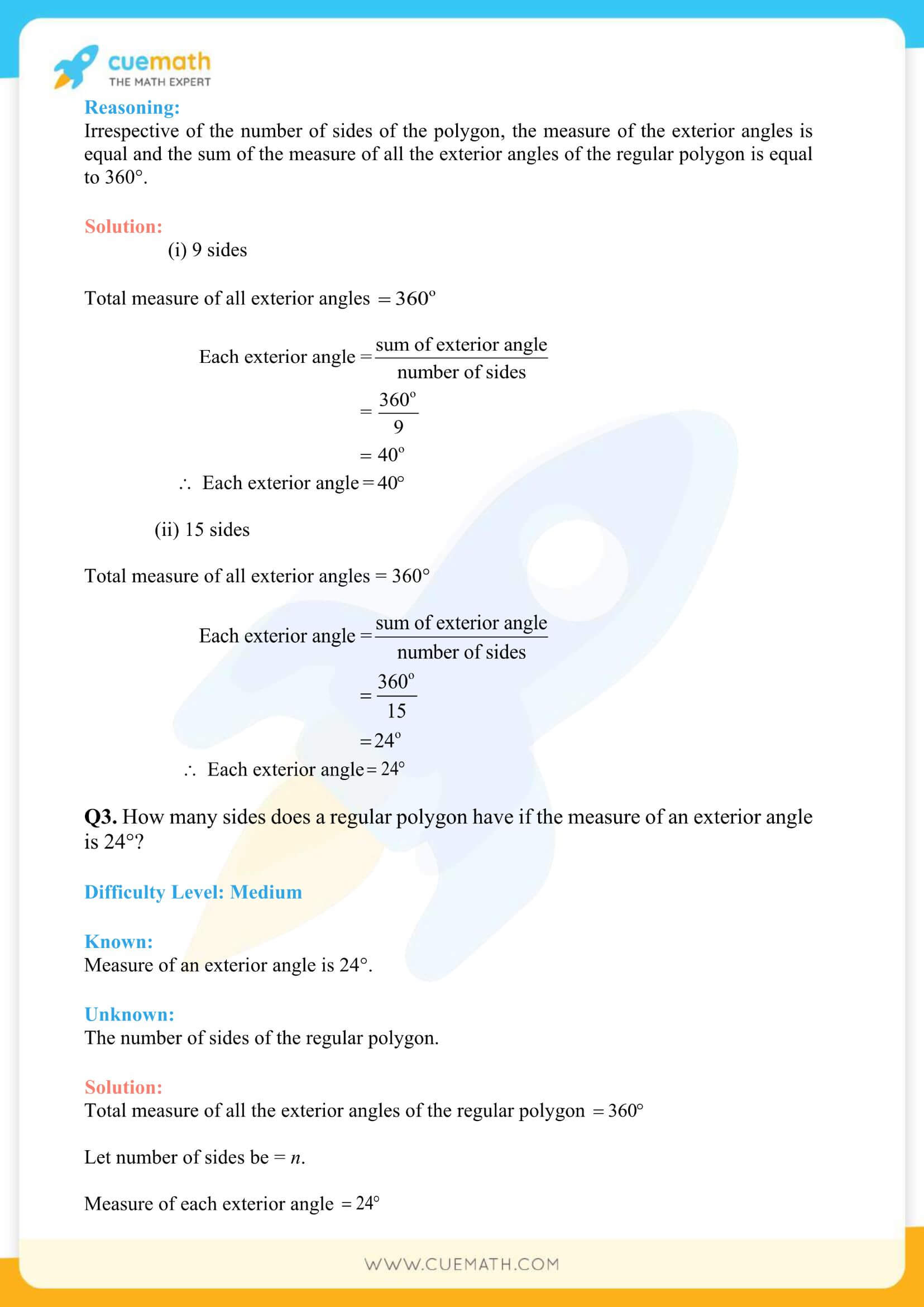
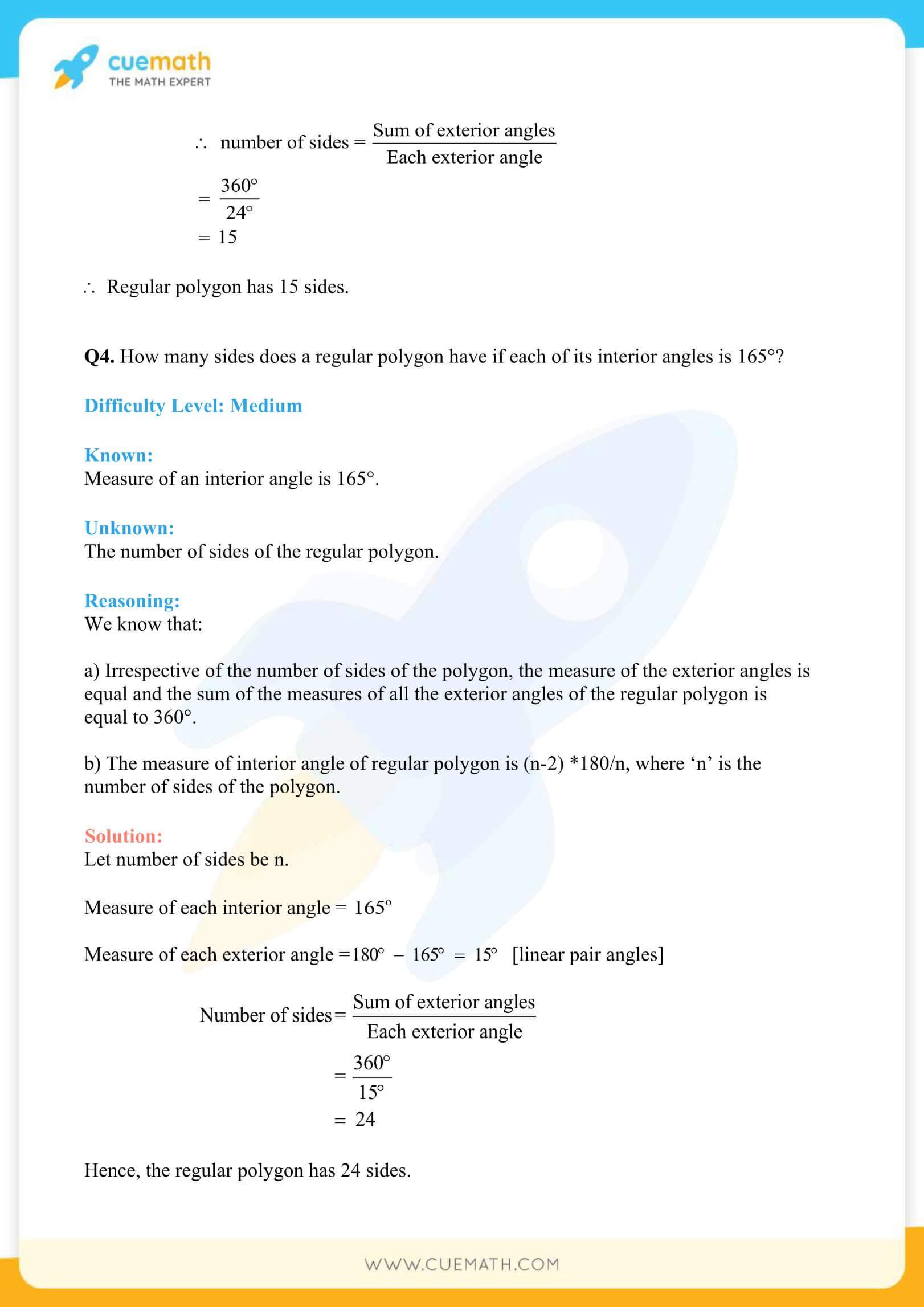
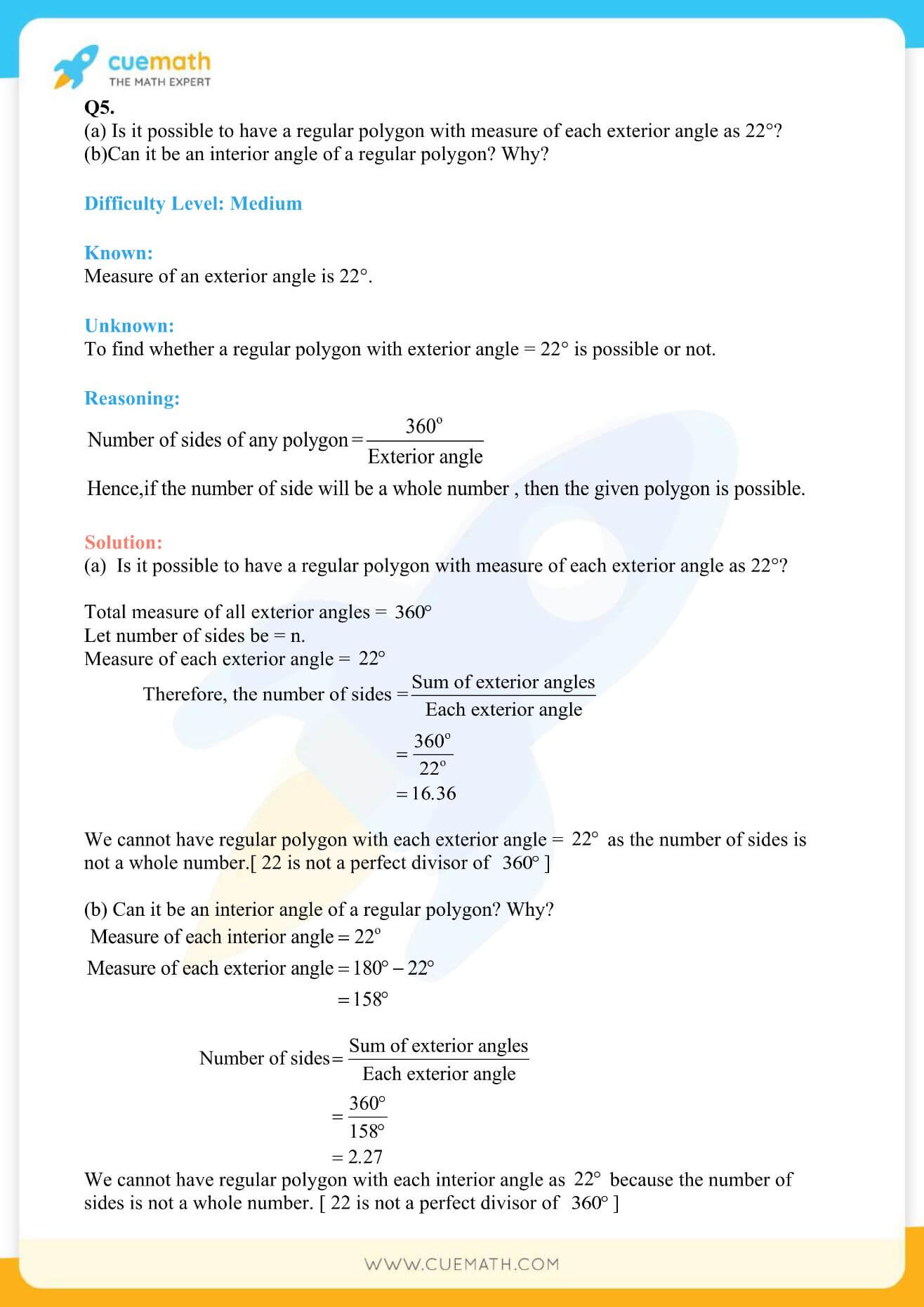
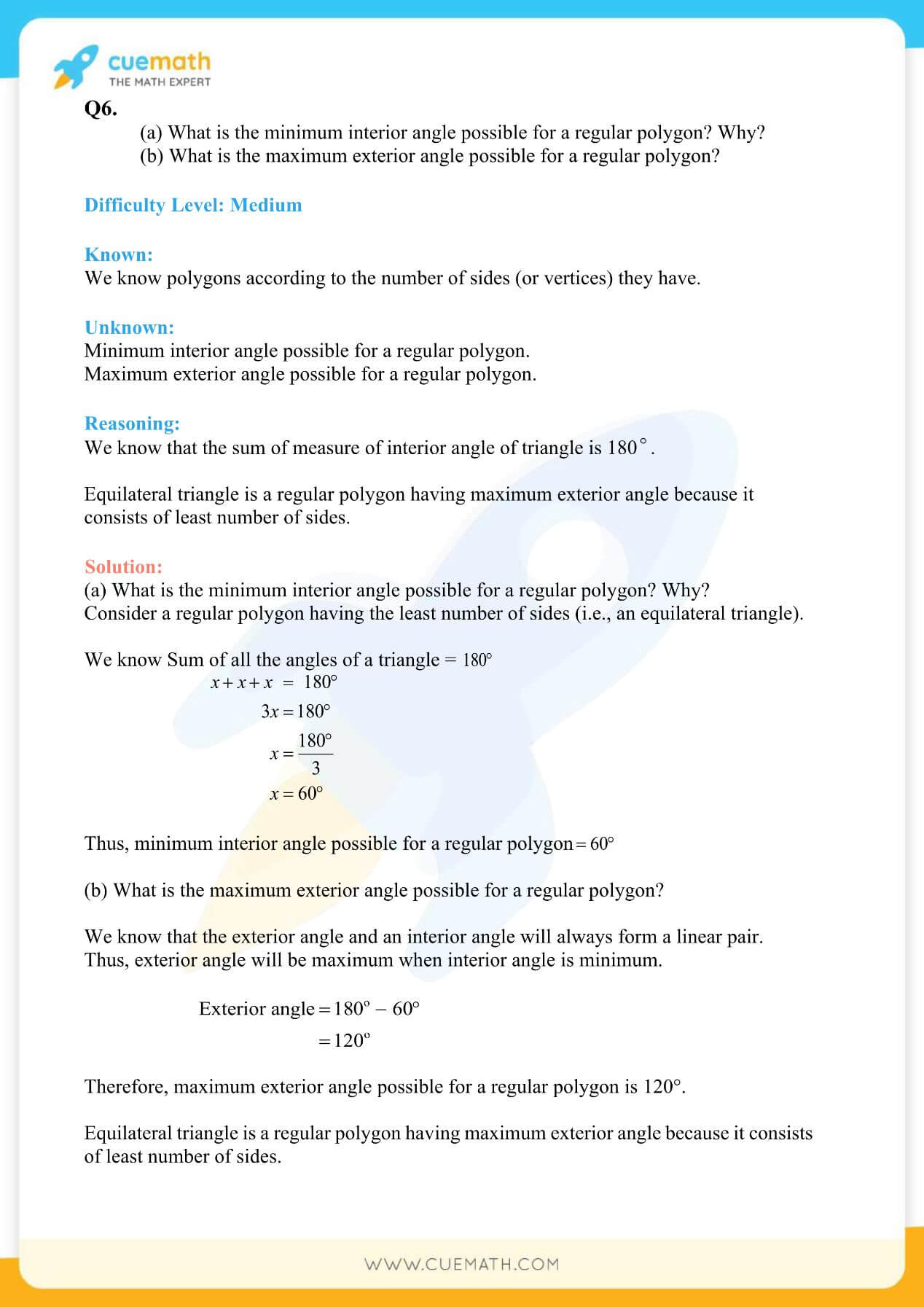
More Exercises in Class 8 Maths Chapter 3
- NCERT Solutions Class 8 Maths Chapter 3 Ex 3.1
- NCERT Solutions Class 8 Maths Chapter 3 Ex 3.3
- NCERT Solutions Class 8 Maths Chapter 3 Ex 3.4
NCERT Solutions Class 8 Maths Chapter 3 Exercise 3.2 Formulas
NCERT solutions class 8 maths chapter 3 exercise 3.2 understanding quadrilaterals is based on one very important formula and that is the exterior angle measure of a polygon.
- Exterior Angle of a Polygon: The sum of the measures of the external angles of any polygon irrespective of the number of sides is 360°.
NCERT solutions class 8 maths chapter 3 exercise 3.2 gives an insight into how to correctly apply this formula and interpret the results.
Download Cuemath NCERT Solutions PDF for free and start learning!
NCERT Video Solutions for Class 8 Maths Chapter 3 Exercise 3.2
| Video Solutions for Class 8 Maths Chapter 3 Exercise 3.2 | |
| Video Solutions for Class 8 Maths Exercise 3.2 | |
| Exercise 3.2 Question 1 | Exercise 3.2 Question 4 |
| Exercise 3.2 Question 2 | Exercise 3.2 Question 5 |
| Exercise 3.2 Question 3 | Exercise 3.2 Question 6 |
visual curriculum